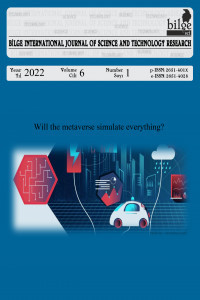Real-Timely Decrease of Snoring in Patients with Severe Degree of Obstructive Sleep Apnea Syndrome Using SNORAP
Real-Timely Decrease of Snoring in Patients with Severe Degree of Obstructive Sleep Apnea Syndrome Using SNORAP
Snoring, SNORAP Severe Degree Obstructive Sleep Apnea Syndrome, Audio Fingerprint, Wearable Processing,
___
- Ayappa, I., Rapoport, D.M., (2003). The upper airway in sleep: physiology of the pharynx. Sleep Medicine Reviews 7, 9-33.
- Beck, R., Odeh, M., Oliven, A., Gavriely, N., (1995). The acoustic properties of snores. European Respiratory Journal 8, 2120-2128.
- Ben-Israel, N., Tarasiuk, A., Zigel, Y., (2010). Nocturnal sound analysis for the diagnosis of obstructive sleep apnea, Engineering in medicine and biology society (EMBC), 2010 annual international conference of the IEEE. IEEE, pp. 6146-6149.
- Cohen, A., Lieberman, A., (1986). Analysis and classification of snoring signals, Acoustics, Speech, and Signal Processing, IEEE International Conference on ICASSP'86. IEEE, pp. 693-696.
- Dunai, A., Keszei, A.P., Kopp, M.S., Shapiro, C.M., Mucsi, I., Novak, M., (2008). Cardiovascular disease and health-care utilization in snorers: a population survey. Sleep 31, 411-416.
- Emoto, T., Kashihara, M., Abeyratne, U.R., Kawata, I., Jinnouchi, O., Akutagawa, M., Konaka, S.,(2014). Signal shape feature for automatic snore and breathing sounds classification. Physiological measurement 35, 2489.
- Fiz, J., Abad, J., Jane, R., Riera, M., Mananas, M., Caminal, P., Rodenstein, D., Morera, J., (1996). Acoustic analysis of snoring sound in patients with simple snoring and obstructive sleep apnoea. European Respiratory Journal 9, 2365-2370.
- Gavriely, N., Jensen, O., (1993). Theory and measurements of snores. Journal of Applied Physiology 74, 2828-2837.
- Guilleminault, C., Poyares, D., da Rosa, A., Kirisoglu, C., Almeida, T., Lopes, M.C., (2006). Chronic fatigue, unrefreshing sleep and nocturnal polysomnography. Sleep Medicine 7, 513-520.
- Hoffstein, V., Mateika, S., Anderson, D., (1994). Snoring: is it in the ear of the beholder? Sleep 17, 522-526.
- Karacan, I., Karatas, M., (1995). Erectile dysfunction in sleep apnea and response to CPAP. Journal of sex & marital therapy 21, 239-247.
- Lindberg, E., Elmasry, A., Gislason, T., Janson, C., Bengtsson, H., Hetta, J., Nettelbladt, M., Boman, G., (1999). Evolution of sleep apnea syndrome in sleepy snorers: a population-based prospective study. American journal of respiratory and critical care medicine 159, 2024-2027.
- Medicine, A.A.o.S., (2005). International classification of sleep disorders. Diagnostic and coding manual, 148-152.
- Ng, A.K., San Koh, T., Abeyratne, U.R., Puvanendran, K., (2009). Investigation of obstructive sleep apnea using nonlinear mode interactions in nonstationary snore signals. Annals of biomedical engineering 37, 1796-1806.
- Sola-Soler, J., Jane, R., Fiz, J.A., Morera, J., (2007). Automatic classification of subjects with and without sleep apnea through snoring analysis, Engineering in Medicine and Biology Society, 2007. EMBS 2007. 29th Annual International Conference of the IEEE. IEEE, pp. 6093-6096.
- Urschitz, M.S., Guenther, A., Eitner, S., Urschitz-Duprat, P.M., Schlaud, M., Ipsiroglu, O.S., Poets, C.F., (2004). Risk factors and natural history of habitual snoring. Chest Journal 126, 790-800.
- Yağanoğlu, M., Kayabekir, M., Köse, C., (2017). SNORAP: A Device for the Correction of Impaired Sleep Health by Using Tactile Stimulation for Individuals with Mild and Moderate Sleep Disordered Breathing. Sensors 17, 2006.
- Young, T., Peppard, P., (2000). Sleep-disordered breathing and cardiovascular disease: epidemiologic evidence for a relationship. Sleep 23, S122-126.
- ISSN: 2651-401X
- Yayın Aralığı: Yılda 2 Sayı
- Başlangıç: 2017
- Yayıncı: Kutbilge Akademisyenler Derneği
Development of the road analysis system to provide the fuel efficiency awareness in the vehicles
Mete Yağanoğlu, Murat Kayabekir, Cemal KÖSE
Bakır Esaslı Rodaj Disklerinin Performansı
Mehmet KAHRAMAN, Habibullah BİLGE, Murat KARAAĞAÇ, Sabri ÖZTÜRK
Authentication with Iris Recognition Based on A 3-Tier Security Analysis Approach
Sercan BULBUL, Cevat INAL, Omer YILDIRIM, Fuat BASCIFTCI
Bilişsel Radyo Sistemleri için Özdeğer Tabanlı Algılama Yöntemlerinde Performans Analizi
Cebrail ÇİFLİKLİ, Fatih Yavuz ILGIN
Yapay Sinir Ağları ile Tr81 Bölgesi Yıllık Elektrik Enerjisi Tüketiminin Tahmini
Yasemin KOCADAYİ, Okan ERKAYMAZ, Rukiye UZUN
Kesir Dereceli Kontrol Sistemlerinde Referans Modele Dayalı PID Kontrolör Tasarımı
